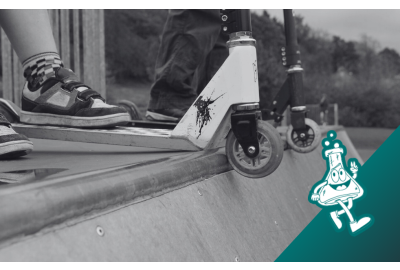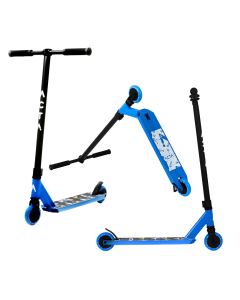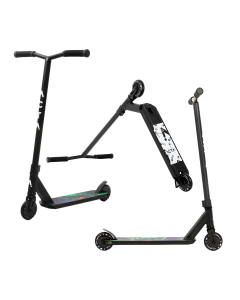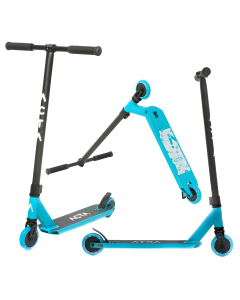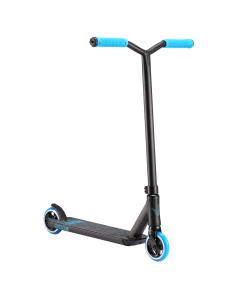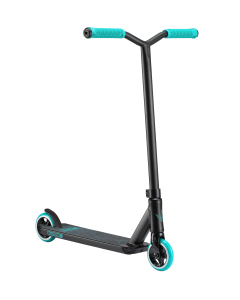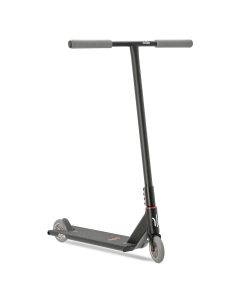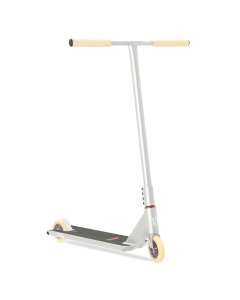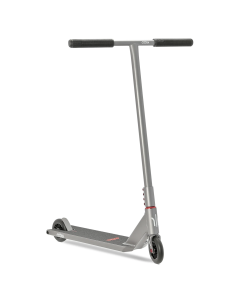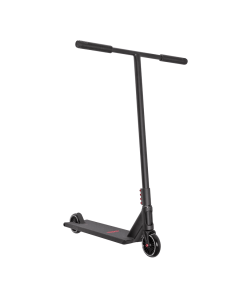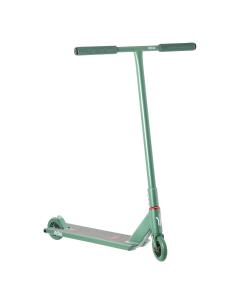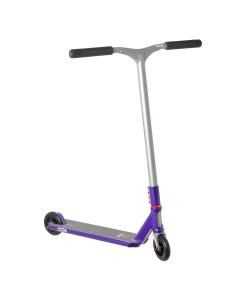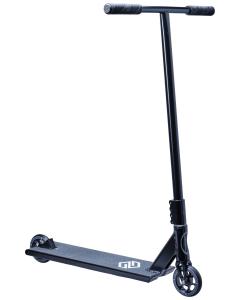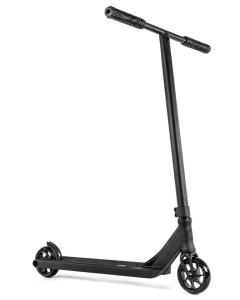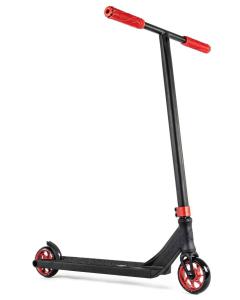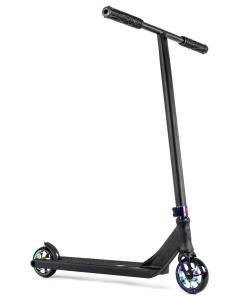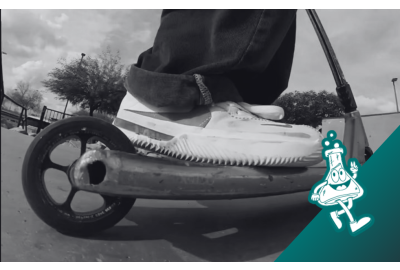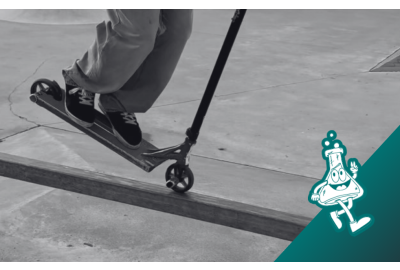If you're thinking about getting into the world of stunt scooters but aren't sure where to start, don't worry — this simple and effective guide is here to help you find the right one. No matter your level or riding style, we’ll explain everything you need to know to choose a stunt scooter that truly suits you.
1. Think about your body type
- Size and weight : If you're on the lighter and shorter side, go for a light scooter (between 2.8 and 3.5 kg). It’ll be easier to handle and help you progress more quickly. On the other hand, if you're heavier or more solidly built, you’ll need a sturdier model, weighing over 3.5 kg, to better absorb impacts.
- A so-called “light” scooter is usually ideal for children or teenagers.
- A “heavy” scooter is best suited to adult riders!
- Bar height : Your handlebars should sit somewhere between your hips and your belly button — that’s the sweet spot for control and comfort. If the bars are too low or too high, you’ll quickly feel limited. For riders between 160 and 180 cm tall, bars between 67 and 72 cm high are usually a great fit. If you're shorter or taller, adjust proportionally to stay within that ideal range.
2. Assess your skill level
If you're a beginner
Choose a robust scooter that can handle your first tricks. A ready-to-ride or "complete" model is perfect for learning without the hassle.
You can check out our selection of complete stunt scooters right here.
-
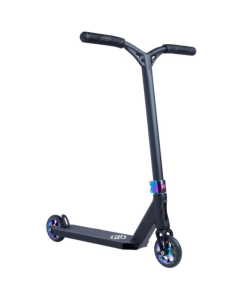
-
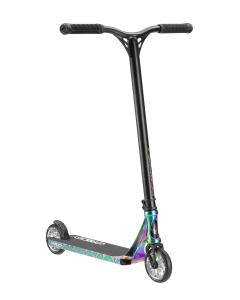 Stunt Scooter BLUNT Prodigy X Oil SlickSpecial Price €189.90 Regular Price €239.90
Stunt Scooter BLUNT Prodigy X Oil SlickSpecial Price €189.90 Regular Price €239.90 -
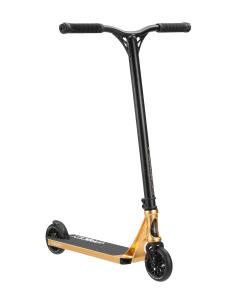 Stunt Scooter BLUNT Prodigy X GoldSpecial Price €189.90 Regular Price €239.90
Stunt Scooter BLUNT Prodigy X GoldSpecial Price €189.90 Regular Price €239.90 -
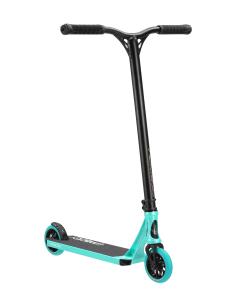 Stunt Scooter BLUNT Prodigy X TealSpecial Price €189.90 Regular Price €239.90
Stunt Scooter BLUNT Prodigy X TealSpecial Price €189.90 Regular Price €239.90 -
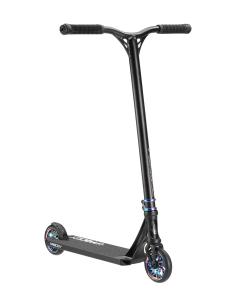 Stunt Scooter BLUNT Prodigy X Black/Oil SlickSpecial Price €189.90 Regular Price €239.90
Stunt Scooter BLUNT Prodigy X Black/Oil SlickSpecial Price €189.90 Regular Price €239.90
If you're experienced
Once you’ve mastered the basics, go for a scooter that’s more lightweight and maneuverable.
It will help you refine your tricks and push your limits.
At this stage, you can either build your own custom setup or go for a pro stunt scooter !
3. What's your style ? Skatepark or street ?
-
More into skatepark ? Love big airs and ramps ? Go for a lightweight stunt scooter with a beveled deck and a Y-bar for maximum maneuverability.
-
More into street ? If you’d rather grind rails and ride the urban landscape, choose a heavier scooter with a boxed deck and a T-bar. Stability and durability guaranteed for your hardcore sessions.
4. The materials that make the difference
- Steel is tough but a bit heavy. If you’re looking to cut down on weight, check out aluminum, or even titanium for the pros. Still not sure ? Take a look at our special handlebar buying guide.
- Aluminum for lightness or steel for strength — choose what suits your needs. If you’re after a good balance, aluminum is always a safe bet. More tips on your scooter deck in our buying guide "How to choose your freestyle scooter deck ?”
- Go for wheels with a metal core — much more durable than plastic. As for size, 100 mm is the standard, but if you’re after more speed, switch to larger wheels. For more tips on choosing freestyle scooter wheels, check out our buying guide “How to choose the wheels for my freestyle scooter ?”
5. The compression system : a small detail that makes a big difference
The compression system (SCS, ICS, HIC or IHC) keeps your scooter solid and smooth. Look into it based on your level and the model you choose — it’s a detail you definitely don’t want to overlook.
Beginner
Go for an IHC or HIC system
IHC (Internal Hidden Compression)
- Lightweight and easy to adjust.
- Perfect for entry-level complete scooters.
- Compatible with standard bars — great for beginners.
HIC (Hidden Internal Compression)
- Simple to set up and super strong.
- Ideal if you’re using oversized bars.
Intermediate
Go for an IHC, HIC or ICS system
HIC (Hidden Internal Compression)
- Always a solid choice for its simplicity and strength.
- Perfect for progressing with your tricks.
IHC (Internal Hidden Compression)
- Lightweight and easy to adjust.
- Great for complete scooters.
- Compatible with standard bars — ideal for beginners and intermediate riders.
ICS (Internal Compression System)
- Known for being lightweight and low-cost.
- Maintenance and setup can be a bit more tricky.
Advanced
Go for a HIC, ICS or SCS system
SCS (Standard Compression System)
- Extremely strong — handles even the most advanced tricks.
- Offers better stability and optimal control.
- Recommended for riders who frequently customize their setup.
HIC or ICS (depending on preference)
- HIC is a great option if you're after simplicity.
- ICS can work for riders looking for an ultra-light setup, but it’s less common.
Pro tip by Scooter Lab :


SCS is often the go-to system for advanced riders, as it offers top-notch durability and stability. However, if you're looking for something lighter and more budget-friendly, HIC or IHC can be great alternatives.
6. Finally : customization
Once you feel comfortable, you can start customizing your setup. Bars, wheels, grip tape… Add some style to your scooter and make it truly yours. But if you’re just starting out, begin with a complete scooter before making any changes.
And if you’re wondering how to change your grip, check out our other blog posts !

